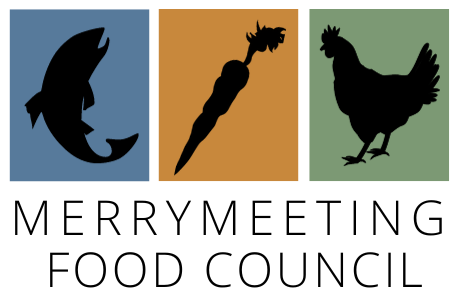From Maine Farmland Trust…
Last week, the National Agricultural Statistics Service (NASS) of the U.S. Department of Agriculture (USDA) released the 2017 Census of Agriculture. The Census is conducted every five years, and provides national, state, and county-level data that informs many federal farm programs, policies, and funding decisions. Maine's Census Report contains some very alarming facts about the loss of farmland and farms.
The numbers are clear - now's the time to step up and support Maine farms!
According to the 2017 Census, Maine has lost a significant amount of farmland in the last five years.
In 2012, Maine had 1,454,104 acres in farmland, but by 2017 that number had dropped to 1,307,566 acres - a loss of 146,491 acres or 10% of Maine's farmland.
In fact, according to American Farmland Trust, Maine was in the top five states with declines in farmland between 2012 and 2017.
Our losses in farmland were coupled with an equally troubling loss of farms.
Maine has lost 573 farms since the Census was last conducted, going from 8,173 farms in 2012 to 7,600 farms in 2017.
The new Census data also reflects the difficult economic conditions many farmers face in Maine and across the Nation.
Farmers in Maine lost income over the last five years. Average net income per farm decreased from $20,141 to $16,958 (a decline of 15.8%), and average net income for producers declined from $19,953 to $16,894 (a decline of 15.3%).
Since 2012, the total per farm market value of agricultural products declined 12.6%, while the average per farm market value of products decreased 6%.
And while the number of farmers under 44 increased by 9.6 %, the number of farmers age 65 and older increased by 30%, signaling an urgent need for succession and retirement planning.
It's not all bad news. There are some bright spots in the growth of local and organic markets, and encouraging shifts in demographics and in the way that producers are now being counted. But, despite some of these positive demographic and local and organic food production trends, the loss of farms and the loss of farmland during the last five years reflects the significant challenges facing our agriculture sector.
See our full analysis of what the Ag Census means for Maine HERE.
We can help to shift these trends by protecting farmland - providing the land base to grow the agricultural economy in Maine - and providing farmers with the critical resources they need for economically viable businesses and successful succession plans.
Now more than ever, we need your help to make sure Maine farms succeed. Help us grow the future for farming in Maine!
MFC Comment:
Download the full 2017 Census of Agriculture Report here. To query data by state or county online or learn more about the census, click here.
For an additional perspective on changes in national farmland availability see the 2018 American Farmland Trust report: Farms Under Threat.


